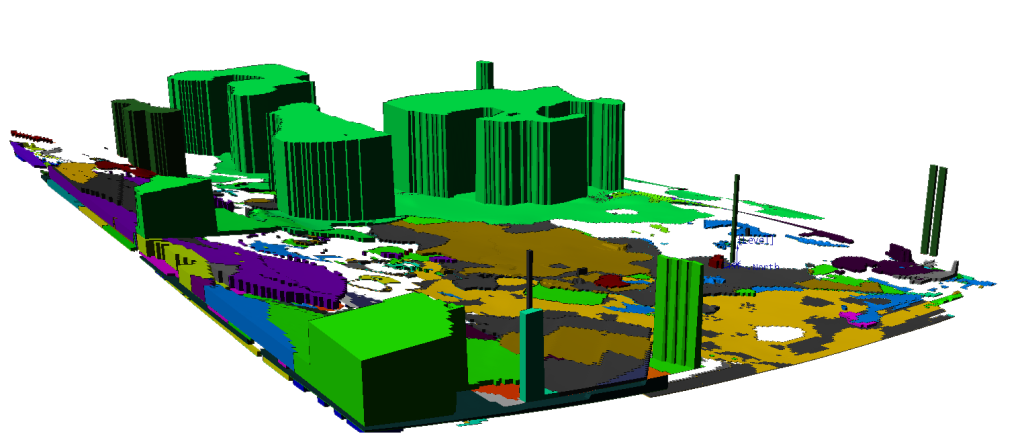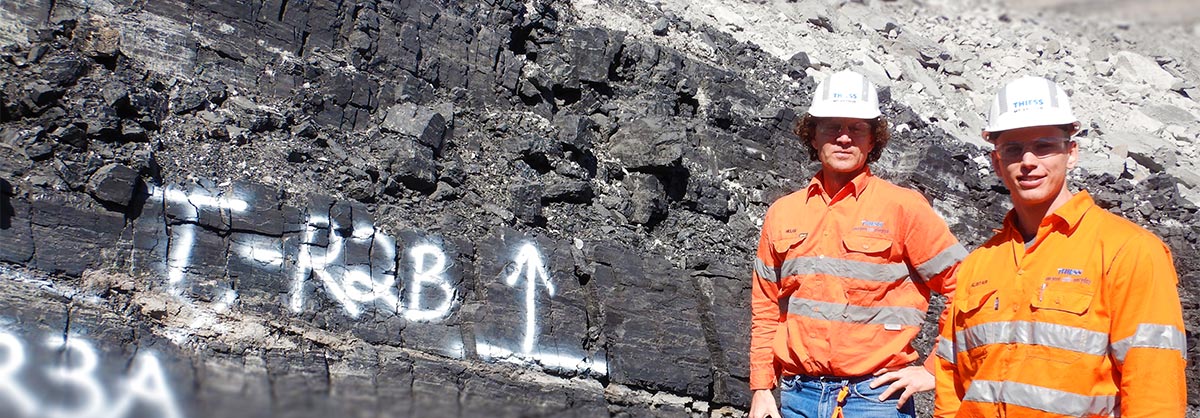December 2019 Issue Index
One-model solution for coal products
CIMIC Group’s global mining services provider, Thiess strives to better design and deliver solutions that unlock potential and create pathways to greater performance.
Thiess geologists overcame software limitations by developing improved run of mine (ROM) modelling methods that incorporate multiple coal products into one model. Working across Thiess’ various mining projects, geologists Alistair Buchanan and Helgi Stedman applied new tools in Maptek Vulcan to develop the ROM modelling functionality.
For a typical deposit, not all coal seams are compatible for seam aggregation, despite being close enough to form a working section. Vulcan 12 offers new flexibility to build working sections that simultaneously align separable parting rules and aggregation compatibility. Before Vulcan 12, ROM modelling functionality was limited to one aggregation rule, which provided less flexibility.
A seam which is not to be aggregated with an overlying seam is known as a geological ‘hard boundary’. Vulcan allows a geologist to select the hard boundaries and control the working sections forming a given work area.

Having flexible hard boundaries is only part of the one-model solution for complicated product requirements that prescribe multiple loss and dilution parameters.
Site geologists were challenged to find a modelling method to evaluate all potential ROM working sections that align with specified ROM product requirements.
In previous Vulcan versions, multiple product specifications were written into separate ROM models, each limited by one set of loss and dilution parameters.
The difficulty in creating one model containing multiple parameters is that once adjusted, in situ seams take on a new thickness which can no longer be referred to as in situ. This is a structural adjustment limitation inherent in the software.
‘When applying loss and dilution to in situ thickness, seam structure adjusts to a position equal to the net change. Depending on the amount of loss and gain, the net change is thicker or thinner than in situ thickness,’ says Stedman, Thiess Principal Mining Geologist.
‘Once in situ structure is adjusted, you’re not able to revisit original thickness and adjust with different parameters to create a different product.’
‘When a product specification prescribes different loss and dilution parameters as well as various flitch thicknesses over diverse products, there is nothing in the ROM modeller to cater for this,’ he says.
The team found the ROM model to be the ideal approach as it is easily built from the resource model without loss of geological fidelity, allowing for the creation and storage of many variables required for the final output.
To work around the structural adjustment limitation and create a single model, a ‘step-down’ method was employed where loss and gain are applied as a multi-step process.
If Model 1 thickness = in situ thickness – Loss A + Gain A then, Model 2 thickness = Model 1 thickness – Loss B + Gain B
Loss B and Gain B are not product specifications, rather [Loss B and Gain B] they are introduced to accommodate the structural adjustment limitation and form a Model 2 thickness from the original in situ thickness.
This method allows restricted structural adjustments to be applied within the software and then multiple products to be modelled into one principal model. Numerous scripts that run sequentially are streamlined using the Maptek Workflow Editor.
Maptek worked with Thiess in rolling the one-model workflow into a single click. The solution was achieved by combining tools in Vulcan 12 using an alternative approach to loss and dilution.
Maptek has used Thiess feedback to enhance ROM HARP modelling in upcoming Vulcan releases.
Thanks to Thiess
Alistair Buchanan, Senior Geologist
Helgi Stedman, Principal Mining Geologist
- Thiess combined Maptek Vulcan tools with an alternative approach to modelling loss and dilution for coal products.
- The new single ROM model is easily built from the resource model, incorporating multiple variables and maintaining geological fidelity.
- Maptek worked with Thiess in rolling the one-model workflow into a single click.

